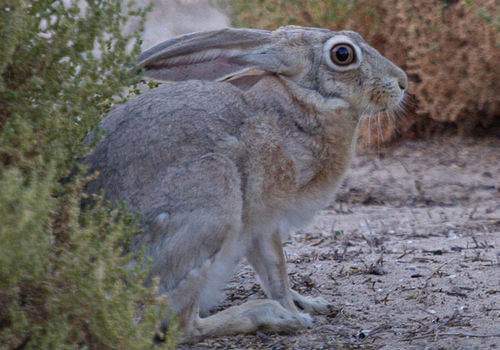
Cape hare
Lepus capensisCape hare
Introduction: The Cape hare (Lepus capensis) was originally named from the Cape of Good Hope, but is widely distributed on the African continent. They are predominately nocturnal animals and lie in forms during the day, usually in grass clumps or under a short bush with their ears folded flat on the shoulders as a sign of alertness. They are fast on their feet and have excellent eyesight and hearing. Their preference is for shorter grass areas that provide cover.
Distribution: The Cape hare occur from the Kunene River in the north of Namibia, running narrowly southwards along the coast and then onto the southern parts of the country.
Diet: Cape hare are grazers and they typically eat short grass and other types of shrubs.
Colouring: Due to their wide distribution, colours can vary, but in the main their hair is light buffy in colour and the under parts are ochre buffy.
Breeding: The gestation period is about 42 days and litters vary from 1-3 in number. Breeding continues even in adverse conditions and it is possible for females to produce up to 4 litters per year.
Size: Adult measure around 53cm with a mass of 2.5kg. The females are slightly larger and heavier.
Klein Windhoek

